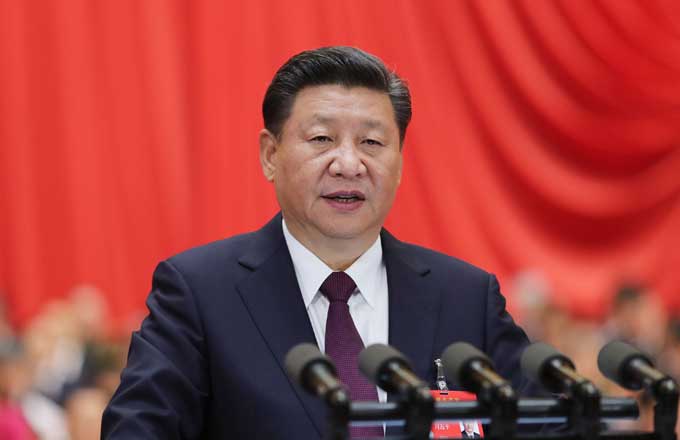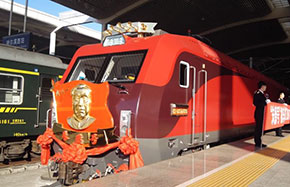Railway cities staying on track
 |
|
A visitor takes a photo of a sculpture that stands in front of the city's old railway station. [Photo Provided to China Daily] |
Although the railways brought modern industries to the new cities, they also brought pollution.
Initially the pollution was caused by the railway, especially during the era of steam engines, in the form of noise, waste water, litter and smoke. It became a huge problem for cities on the major routes.
In addition, the industries were highly polluting. In Shijiazhuang, iron, steel and textiles were the pillars of the local economy for many years.
In the past five years, the local government has produced a raft of policies that will optimize the industry structure while protecting the environment at the same time.
"The heavy smog that covered the city for months was not directly connected with the railway, but the city's economy expanded through industries drawn by and related to the railway," said Liang Yong, vice-president of the Hebei Institute of Tourism Planning and Development. He pointed out that the city of Tangshan, which was spurred by the development of the railway, has a serious environmental problem. "These cities were all influenced by the railway to a certain degree."
'Immigrant cities'
In most cases, the cities driven by the railways have always played host to large numbers of workers from other parts of China and although that can promote multiculturalism, local traditions can become subsumed.
"Some of these 'cities pulled by trains', also known as immigrant cities, did not have a deeply rooted traditional culture, which meant the residents didn't share a common cultural consciousness. That can be detrimental to urban development because there are no defined local characteristics," said Liang.
He gave Shijiazhuang as an example: In less than a century it has grown from a village of just 200 households to a mega-city with a population of millions, 90 percent of whom come from outside. When the authorities decided to erect statues in public places, they discovered that the figures depicted were generic and had little or no connection with the city's history. Moreover, Shijiazhuang's modern buildings are unremarkable.
"If you took away the local signposts, Shijiazhuang would look no different to any other modern city, in other words, it lost its traditions during development," said Liang.
Zhang Chao lamented the fact that he is unable to offer special hometown snacks to his friends in Beijing. "The lack of special snacks and cuisine demonstrates the lack of local tradition," he said.
Liang echoed that view, noting that the city has few tourist sites of historic interest, indicating that the traditional culture has not been protected.
"Many cities that developed because of the railway have the same problems. They have not combined the diverse cultures brought by the waves of immigrants during the period of rapid economic growth, and as such, the cities risk losing their traditions," said Xing.
"Shijiazhuang witnessed rapid development in the last century thanks to the spread of the railway, but the railway also brought challenges, such as large numbers of immigrants. However, as a transport hub it can still benefit from the rail system if it handles those challenges well."
Contact the writer at zhengjinran@chinadaily.com.cn





















